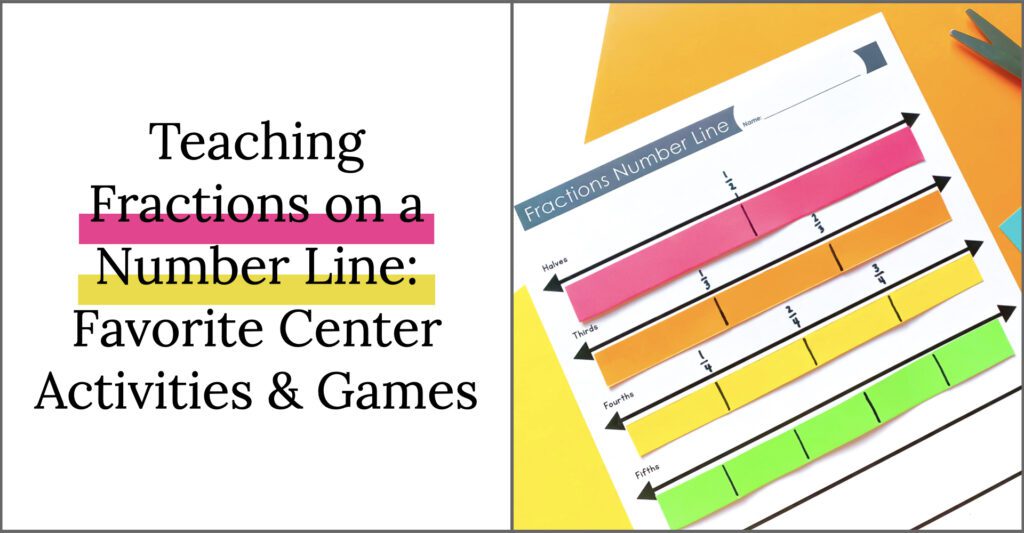

When I first started teaching fractions, I LOVED it… until I got to the part where I had to teach fractions on a number line. It seemed like nothing we had already learned about fractions was transferring over to this new number line model. Has this happened to you, too?
It took some trial and error, but I found some awesome activities that really helped my students practice identifying and representing fractions on a numberline. Even better, they loved playing them and kept asking for more time!
So what are these magic center activities? Let’s take a peek at my eight favorite centers to teach fractions on a number line:
Fraction Names
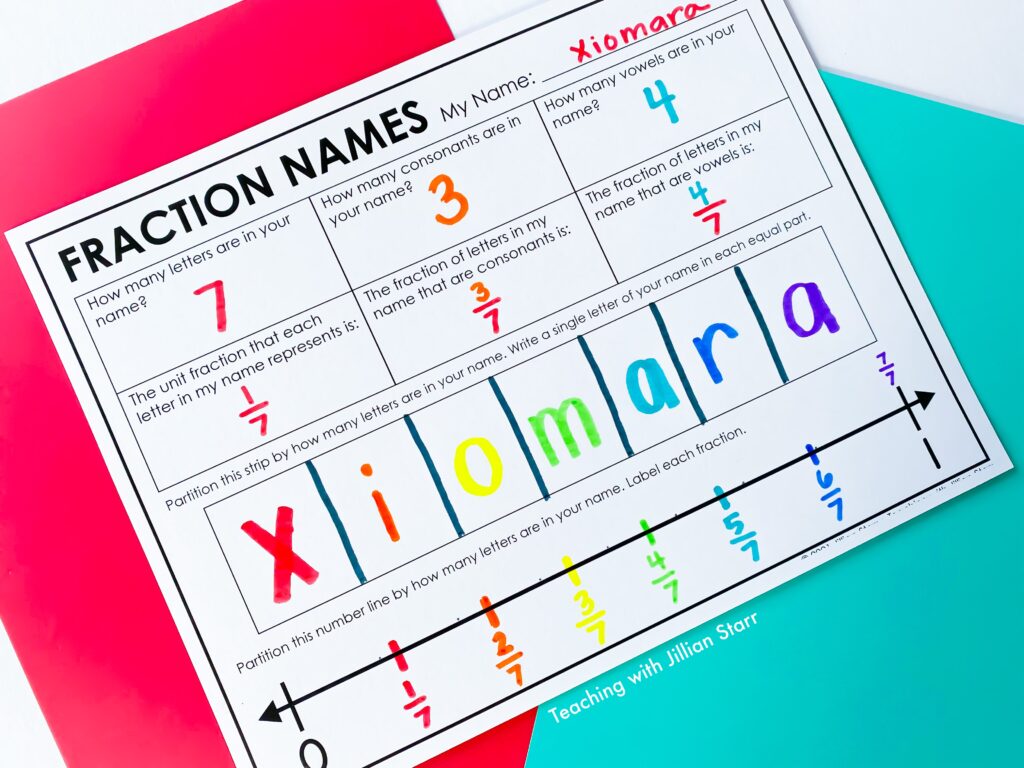

If you read my post about fractions through one whole, you know that I love this activity. Whenever you can make an activity about them, you do it, right?
When it comes time to teach fractions on a number line, I begin by referring back to our Fraction Names activity. This is a great opportunity for a Number Talk. During the conversation, we take a look at our number lines and share what we notice.
This introductory experience removes a lot of the anxiety students experience around learning new concepts. This is because it revolves around something familiar. Creating common experiences is so important in building a strong math community, and this is just another way to continue that effort.
Modeling Fractions on a Number Line
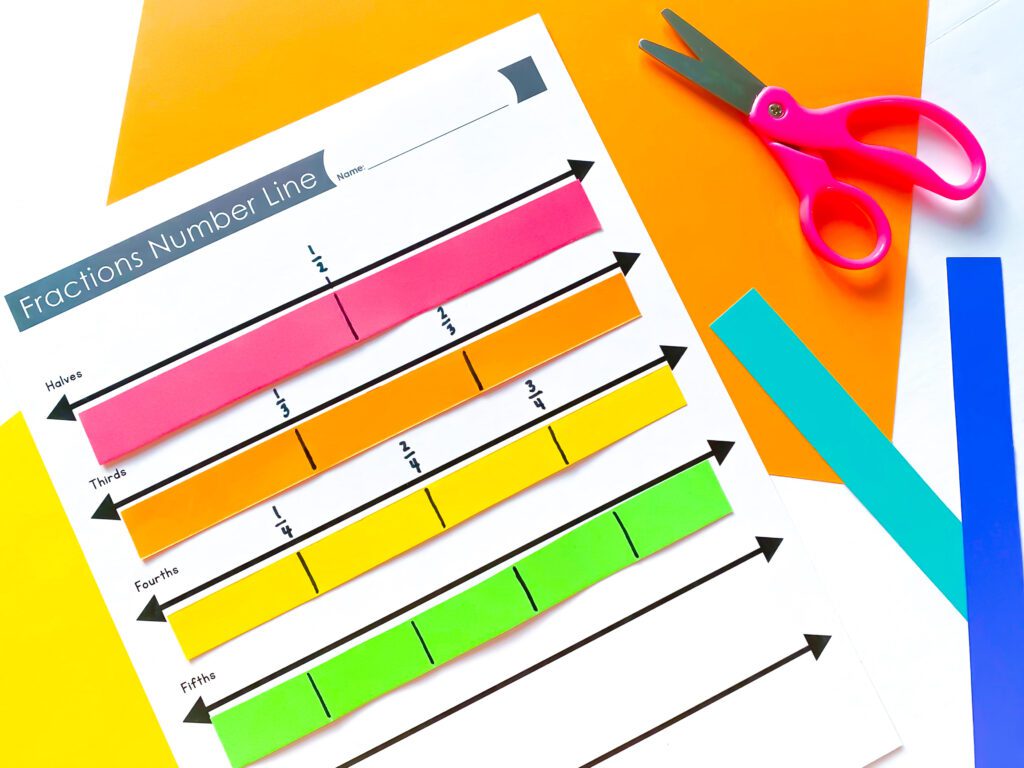

After our introduction, I like to give my students a hands-on experience. This Fractions Number Line activity uses another familiar idea: Fraction Bars. We use fraction bar models from the very beginning of our fraction unit. When we bring it into our work with number lines builds upon that prior knowledge.
For this activity, I cut out pieces of construction paper or card stock to the length of the number lines on the page. After passing several out to each student, we get started with folding. (I like to give out a few extra because it may take more than a few attempts for fractions like thirds, fifths, and sixths.).
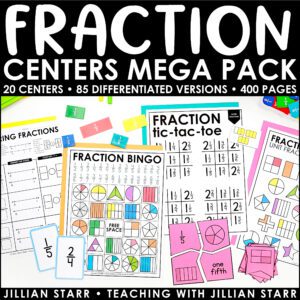


Fraction Centers Mega Pack
Together we practice folding in half, lining up our paper strips (fraction bar models) with the number lines. Then we label our marks. As we progress through thirds, fourths, fifths we discuss strategies and observations. Often students will share that to make fourths, they first fold in half, and then half again. I ask them why they think that works? How does that understanding help you make fourths on a number line?
These conversations create an awesome foundation for understanding later concepts like equivalent fractions and common denominators.
Number Line Clip Cards
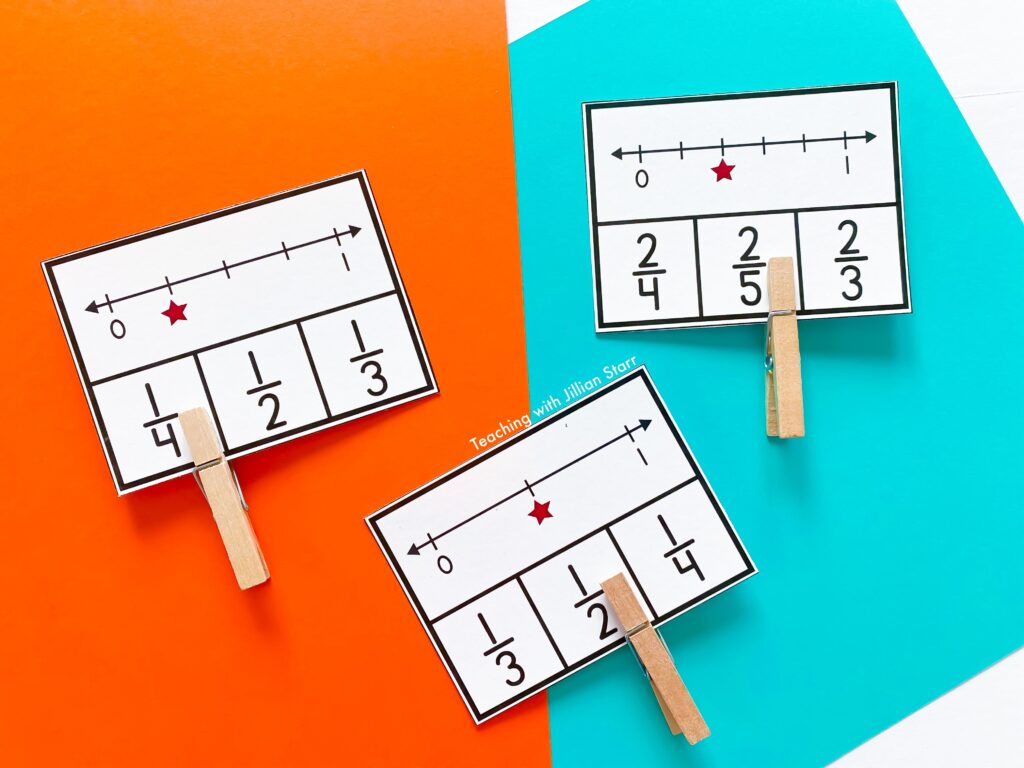

Do your students ever get confused with how many tick marks there are between two whole numbers on a number line? For example, there are three tick marks between 0 and 1, so they assume they’re working with thirds… but it’s actually fourths and they just forgot to include the “1” as the fourth tick mark? MINE DO!
Many students need practice with visuals to internalize this idea, so I made these clip cards to help. Having a mystery fraction on a number line engaged my students, but also let me watch to see where there were misunderstandings. This allowed me to help correct those misunderstandings in the moment. Then I could watch again to see how their thinking shifted.
Number Line Spin and Cover
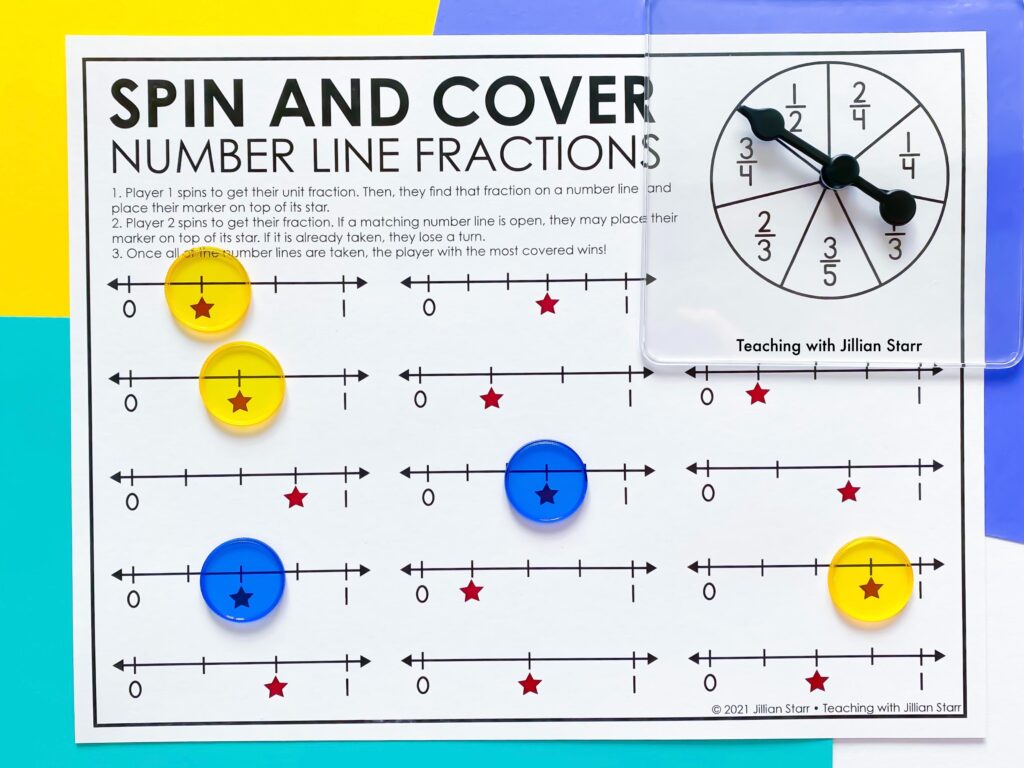

I love a good partner game, and this might be one of my favorites for practicing fractions on a number line. If you’re not familiar with Spin and Cover, here’s the gist: Players take turns spinning. When a player spin lands on a specific fraction, they search the board for a number line representation to match it. They may place their counter on that visual and claim it as theirs. Players continue taking turns, losing a turn if there are no matches open, until all of the board is covered. The player with the most counters on the board wins.
It’s a definite favorite, and students can play it over and over again during center work (read: no fast early finishers!).
Fraction Number Line Tic-Tac-Toe
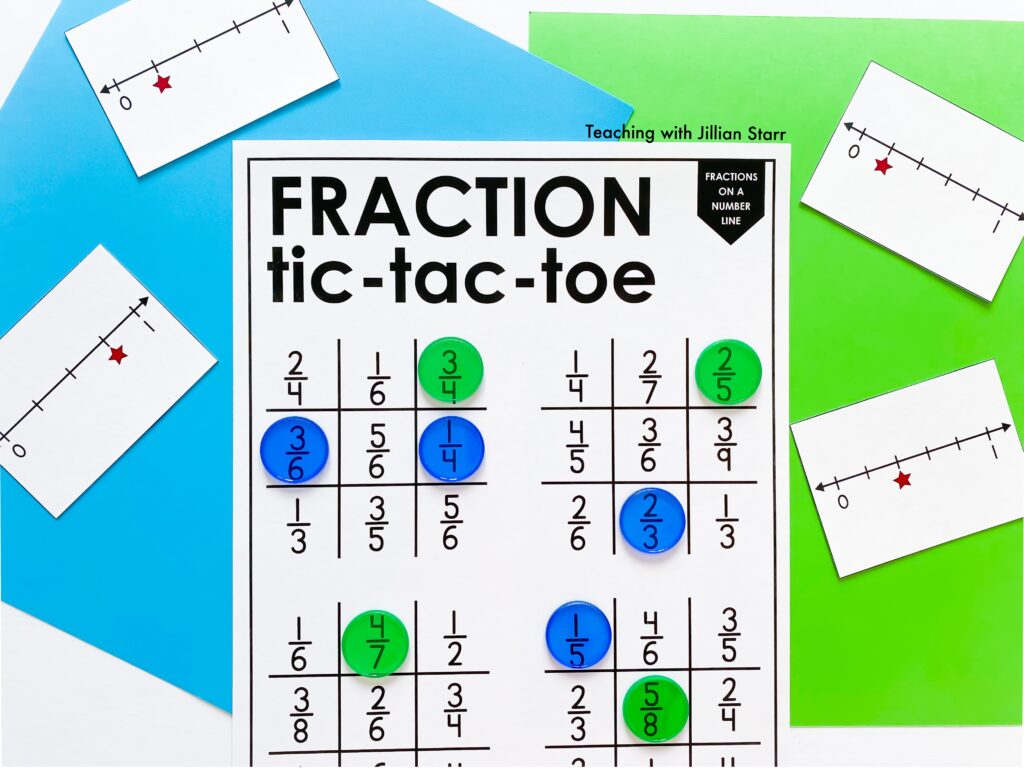

Let’s play tic-tac-toe, but kick it up a few notches. In this version, students compete on four different boards simultaneously, and they can’t get enough!
One at a time, a number line card is flipped over. Students match the mystery fractions on the number line to one of the possible fractions on the board. Each time a board is won, the game continues on the other boards until there are none left. The player with the most boards wins.
I love Fraction Tic-Tac-Toe because it applies students understanding of fractions on a number line and mixes in some strategy, for a fast-paced, fun-filled center.
I Have/Who Has
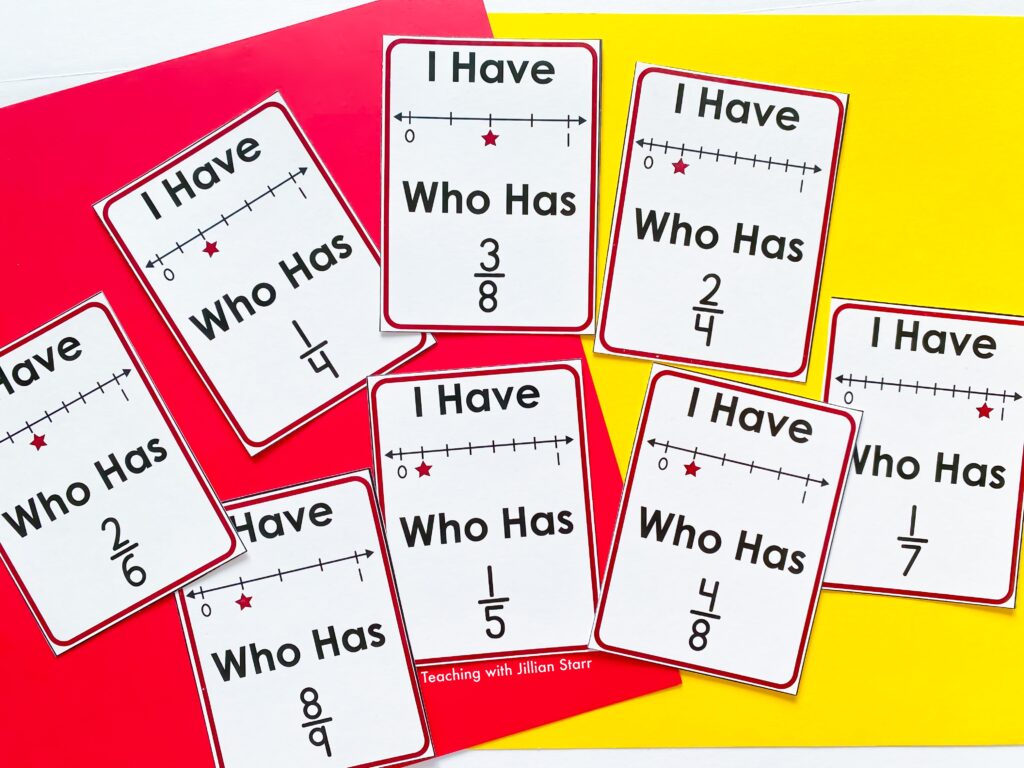

If you’re looking for an activity for a small group or whole class, I Have/Who Has is my go-to! I love it for so many reasons:
- It asks students to work with fractions in written form and on a number line
- It does not have a set amount of players (three or more will do)
- It is SELF CORRECTING! If you get to the end and there are still cards left, students know that there was an error along the way, and they have to go back and find where it was.
A self-correcting activity that can be used with any amount of students and gets them to have fun? Sign me up!



Fraction Centers Mega Pack
Comparing Fractions on a Number Line
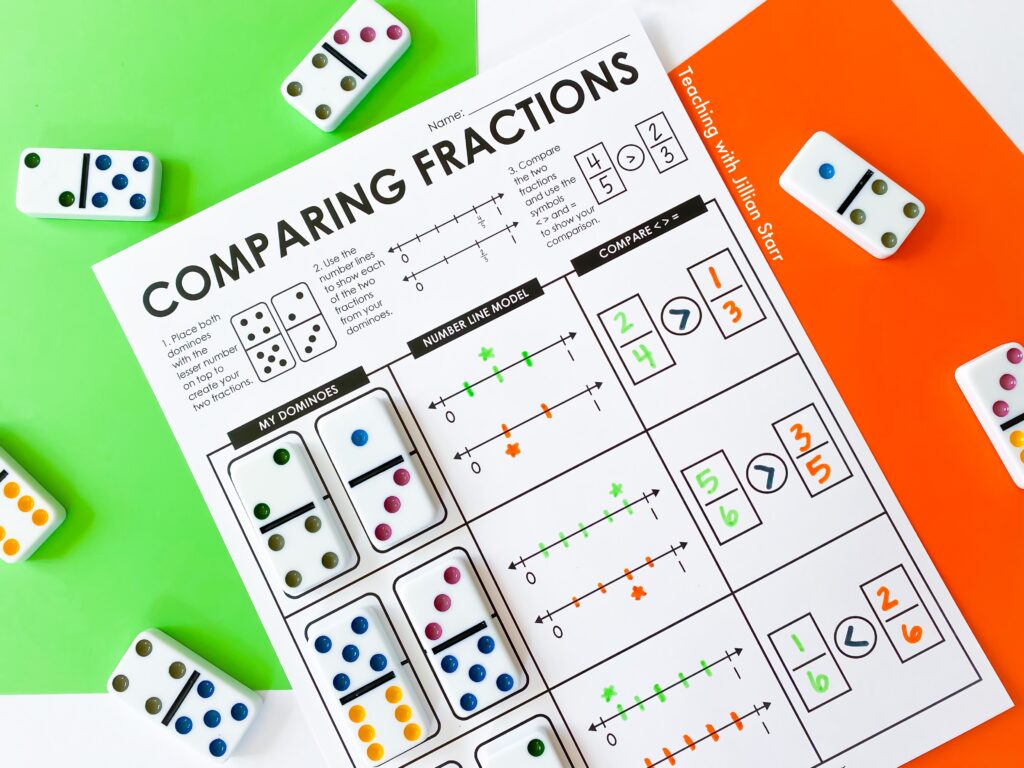

I shared this activity when I took a deep dive into How to Make Comparing Fractions More Engaging. It’s such a good one that I’d be remiss to not mention it here. I mean, who doesn’t love working with dominoes?
When teaching fractions on a number line, I use this as an extension activity. I want my students who are further along in their understanding to apply it to other math scenarios. Using a number line to compare fractions is a great way to do this!
For this activity, students select two dominoes to create their fractions. Then, they partition each number line to represent the corresponding fraction. Since the two number lines are stacked on top of one another, it helps them begin visual comparisons.
Finding Equivalent Fractions on a Number Line
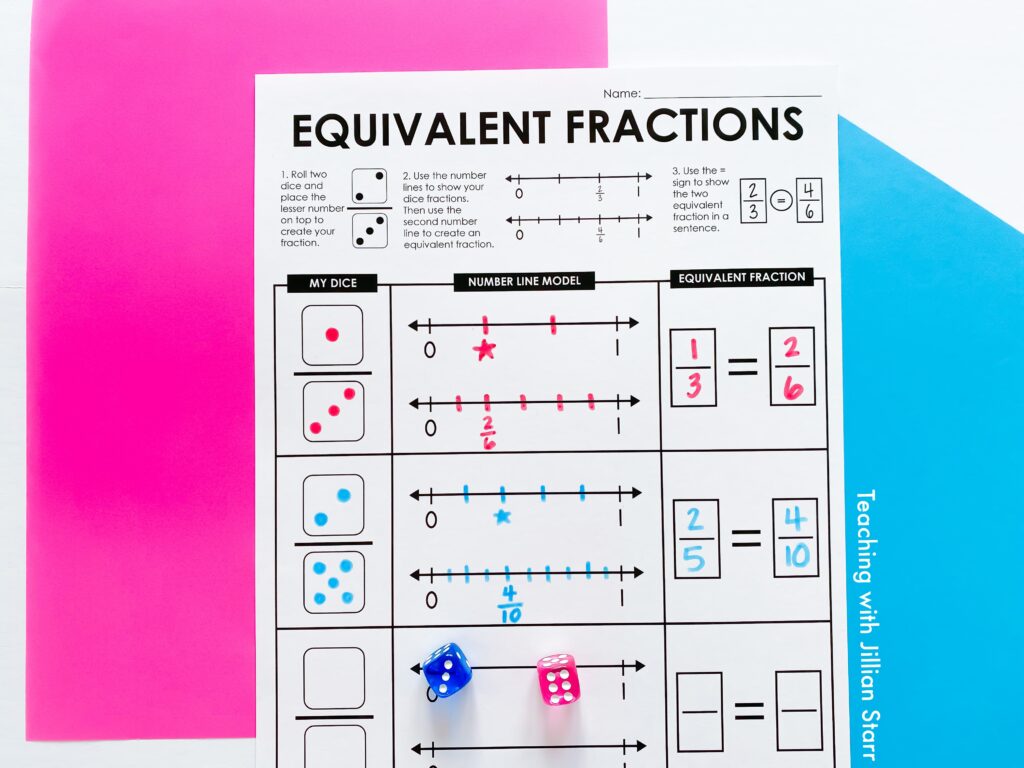

Finding equivalent fractions on a number line is another favorite extension activity. Similar to the comparing fractions activity above, students can use dice or a domino to create their first fraction. Again, they partition the number lines to create their original fraction and an equivalent fraction.
All of these activities have helped my students learn how to represent and identify fractions on a number line. I hope you find them helpful as well. If you give any of these a try OR have a different favorite, I’d love to hear from you.

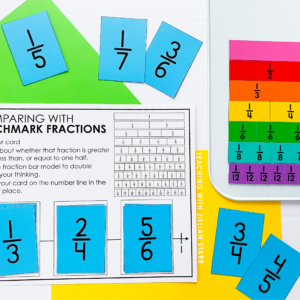

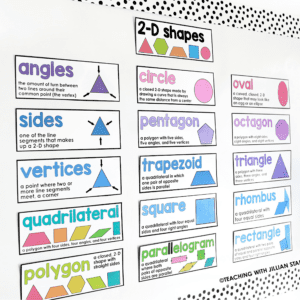
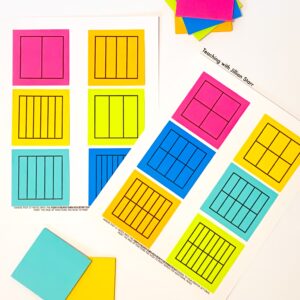

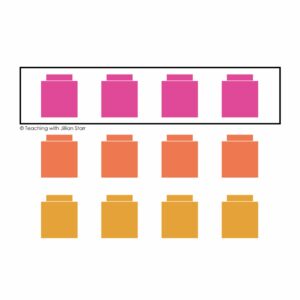
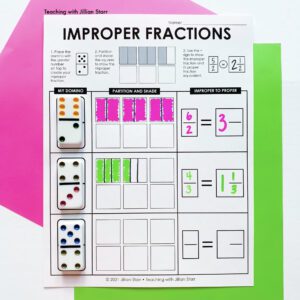
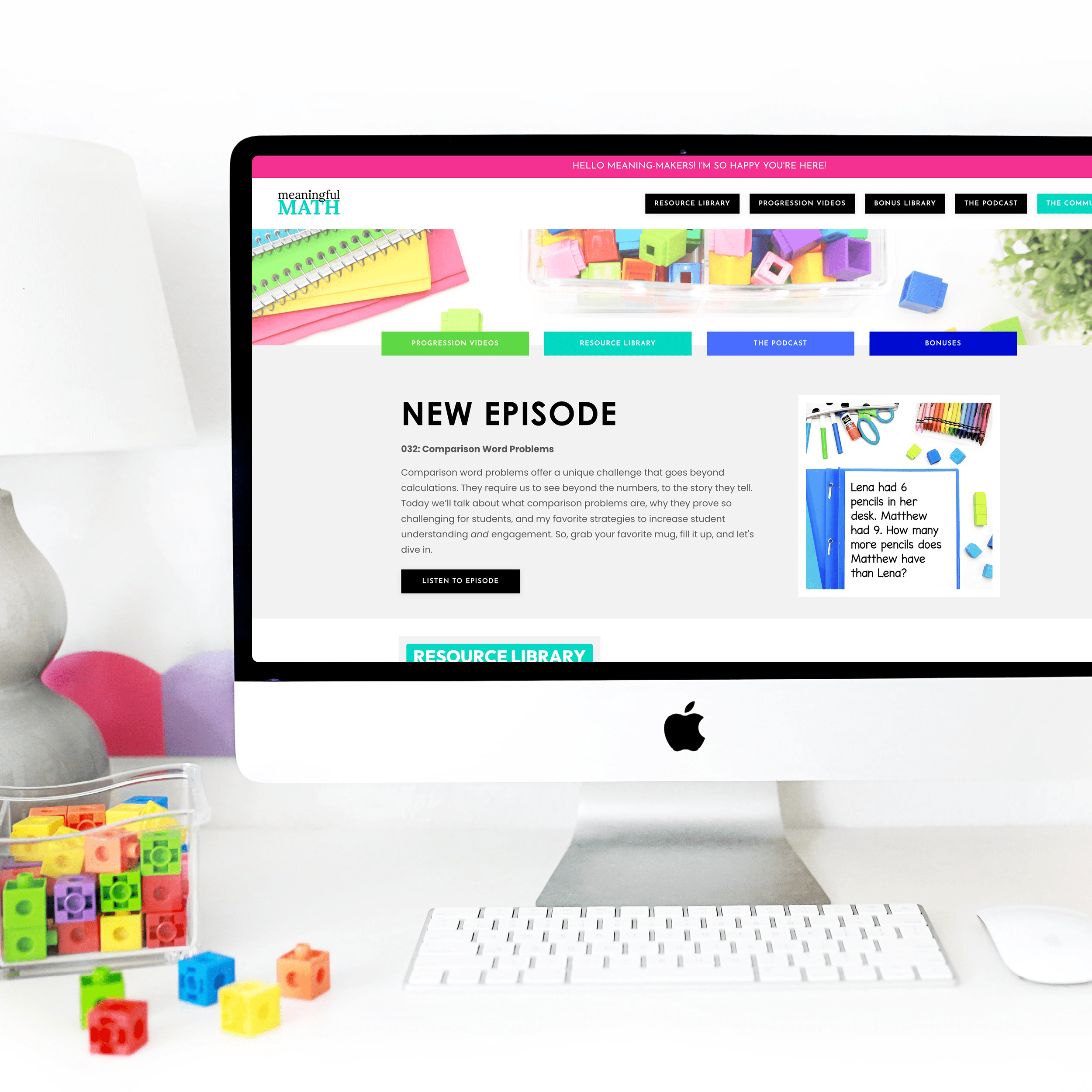

Love these fraction ideas. Will
definitely be using these next term.
This is a GREAT post, THANK YOU!!! I’m headed over to your store to get at least a few of these centers/activities. (PS — I also LOVE your reference to Alexis and “Eewww, David!” I have a bumper sticker with that quote on my car!)
Haha! I’m so glad we share a love of Schitt’s Creek! Please let me know if you have any questions about the fractions resource. I’m happy to help!
I’m so, so happy to hear that you enjoyed these ideas! Thank you for letting me know.